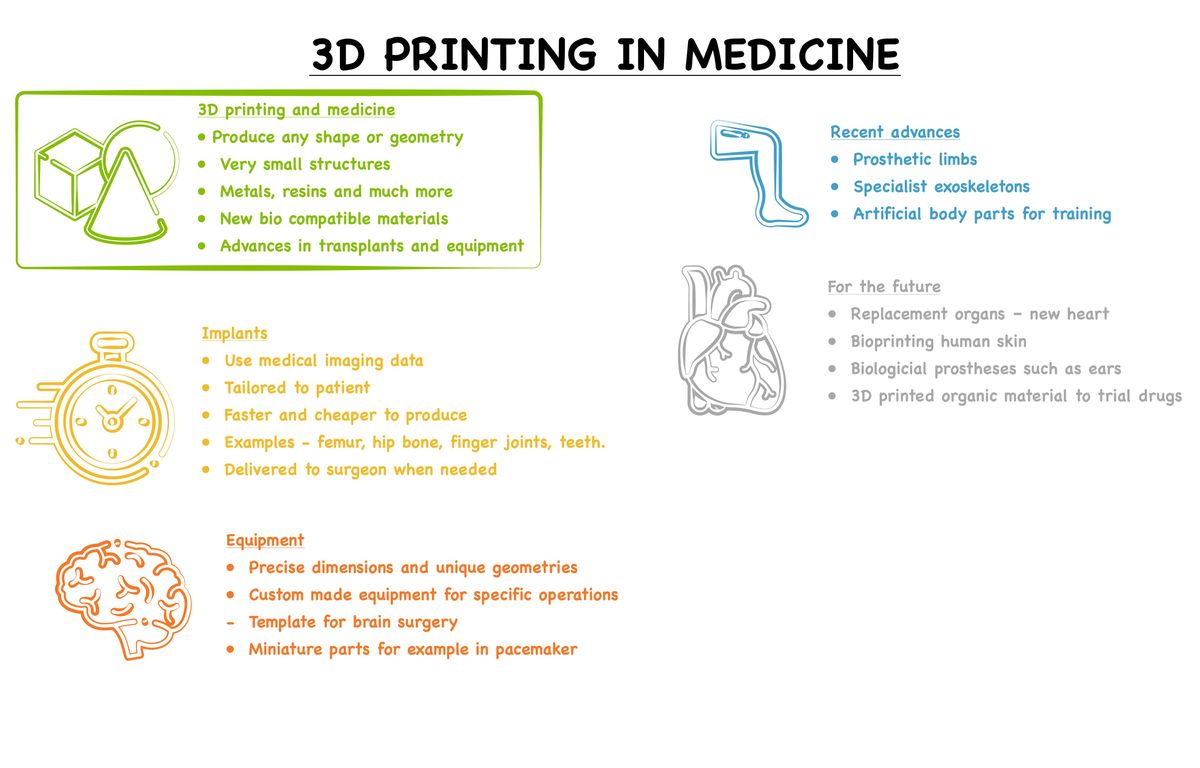
3D Printing in Medicine
Your masterclass in product design and development
Protolabs’ Insight video series
Our Insight video series will help you master digital manufacturing.
Every Friday we’ll post a new video – each one giving you a deeper Insight into how to design better parts. We’ll cover specific topics such as choosing the right 3D printing material, optimising your design for CNC machining, surface finishes for moulded parts, and much more besides.
So join us and don’t miss out.
Insight: 3D Printing in Medicine
Transcript
It’s Friday already, which means it’s time for another insight video into digital manufacturing.
This week we’re going to take a closer look at how 3D printing is impacting medicine.
Firstly, let’s briefly recap on where the technology is before taking a closer look at some impressive applications.

As you know 3D printing is an additive manufacturing process where material is added to the structure layer by layer. This technique allows you to design exactly what you want, there are few, if any constraints, and you can design minute parts with incredibly fine details.
Most people think of polymers and plastics when it comes to this technology with the stereolithography process allowing the production of complex geometries as well as very small structures.
New materials are being introduced all the time, for example Microfine Green allows us to produce incredibly fine, high resolution structures for things like miniaturised catheters or minimally invasive tools.
But 3D printing can use far more materials than this. Another process called direct metal laser sintering is great for printing parts made from metals and other alloys.
It’s fair to say that 3D printing opens a whole new world for medical equipment manufacturers, surgeons, doctors, and dentists.
Let’s start with implants. The fact that you can achieve any geometry that you require, it makes it a perfect solution for a cost-effective way to produce one off parts.

Modern medical imaging produces data that allows the production of an implant specifically for a patient.
Before this, custom-made implants took time to produce and were expensive.
Now you can have a 3D printed femur implant, hip bone, finger joints, jawbone, cranial bones and far more all tailored to your body. And if you visit the dentist for a tooth implant, the chances are that 3D printing will produce it.
It saves money, is specific to the patient and it is quick to produce. This means the delivery of the implant is there exactly when the surgeon needs it.
As well as producing parts for the body, 3D printing is proving a winner for producing individual medical devices and custom-made products.

Special parts often need precise dimensions and unique geometries. A surgeon often wants aids specifically designed for an individual patient and their operation. A good example is a template for drilling into the skull with millimeter precision. Again, you can use CT scans to create accurate files for a 3D printer to produce precise templates quickly.
You can also produce products for special drilling, for incisions and better suturing of surgical wounds. The medical industry is finding new applications all the time. It means that what was once impossible is now possible.
Some of these innovations can be tiny, such as a single part in a pacemaker that is only a fraction of a millimeter in size using our Microfine Green material.
In fact, when far cleverer minds than mine really start to think about it, whole new possibilities open up. Things that in the past were science fiction are now becoming science fact.

Prosthetic limbs are one application, another is the development of specialist exoskeletons to improve musculoskeletal function. There are discussions about producing specific body parts in different materials for both medical students and surgeons to practice complex surgery when training. And because flexible materials can be printed, these models will even have the same characteristics as the actual body part.
So, 3D printing has revealed a whole new world of possibilities in medicine, some of which are only just being discovered.

The future is even more exciting. There are already the first prototypes for replacement organs such as a 3D printed heart. Other research is exploring bioprinting to produce human skin and biological prostheses such as ears and to print this organic material straight onto the patient.
The development of 3D printed organic material may also limit the need for future animal and human trials of new drugs. When you think about it, the implications are enormous.
It is too soon to say when or all of this will become a reality, but the technology is certainly expanding what might be possible. Using 3D printing for medical applications will explore what processes are possible and how they can improve everyday clinical practice.
It also means that the links between manufacturers of devices and clinicians will get closer as more “what if” questions are answered.
The technology is very much a technology of the present for both clinicians and equipment manufacturers. In this fast-changing industry, the challenge is as much about keeping up to date with today’s advances as thinking about those of tomorrow.
Right that’s it for today. Have a fun and healthy weekend and I’ll see you next Friday.
With special thanks to Natalie Constable.











